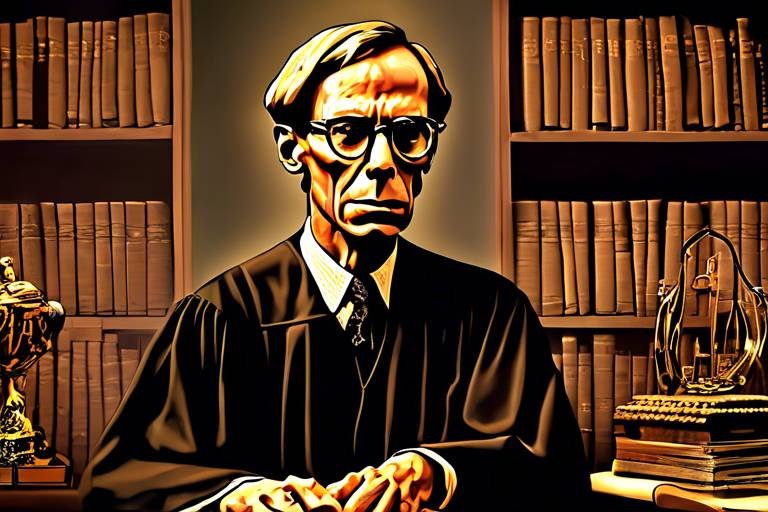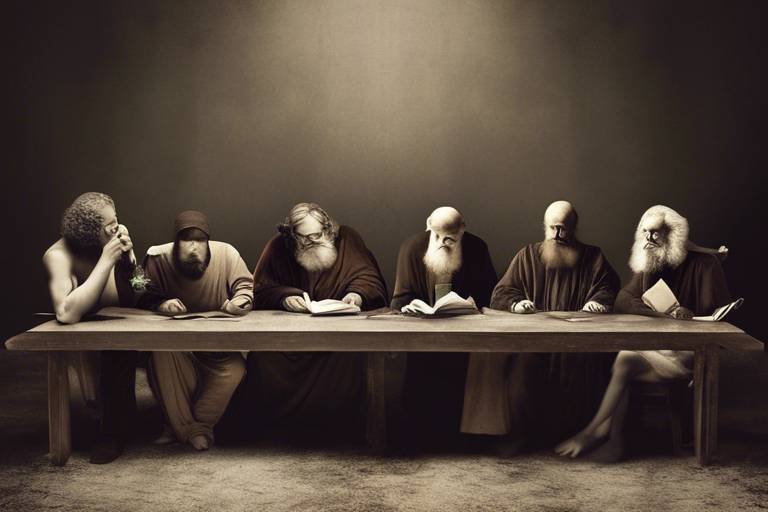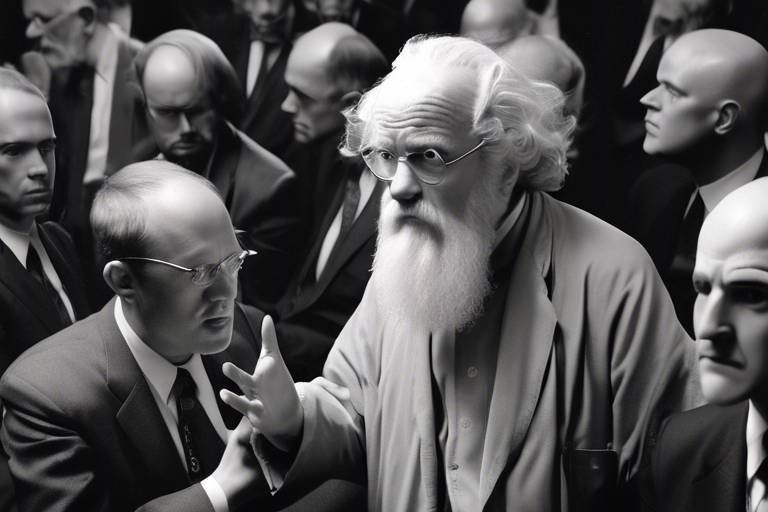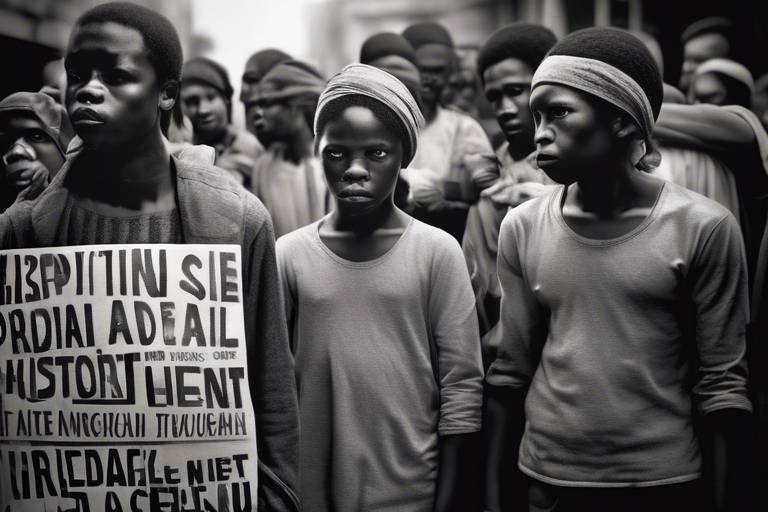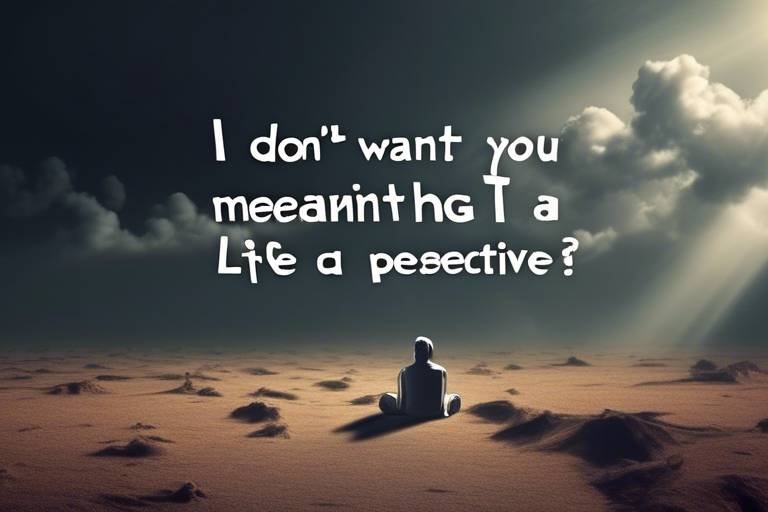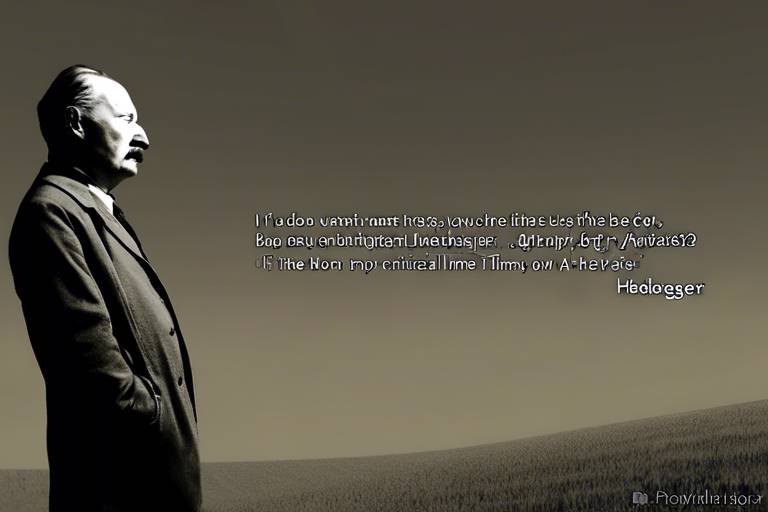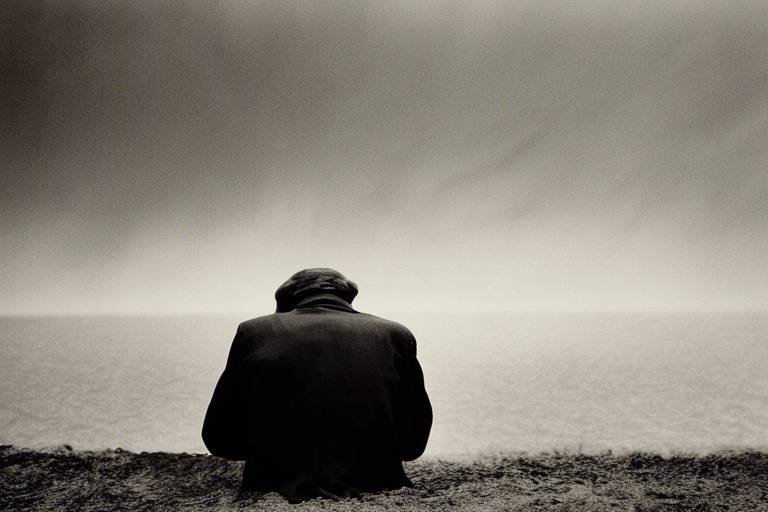Examining John Rawls's Theory of Justice
When it comes to understanding the complexities of justice in society, few philosophers have made as significant an impact as John Rawls. His Theory of Justice, introduced in his seminal work "A Theory of Justice," offers a fresh perspective that has sparked debates and discussions across various fields, including political philosophy, ethics, and economics. At its core, Rawls's theory seeks to provide a framework for creating a fair and just society, one that prioritizes the well-being of its most vulnerable members. But what does this mean in practical terms? How can we apply these philosophical concepts to our everyday lives? In this article, we will delve into the foundational concepts of Rawls's Theory of Justice, exploring its implications for social justice and its relevance in contemporary political discourse.
Rawls's approach begins with the idea that justice should be viewed as fairness. He challenges us to think about the principles that would govern a society if we were to design it from scratch, without any knowledge of our own circumstances. This hypothetical scenario, known as the original position, is crucial in understanding how Rawls believes we can achieve fairness. Imagine being placed in a situation where you don’t know if you’ll be rich or poor, healthy or sick, educated or uneducated. How would you want the rules of society to be structured? This thought experiment leads us to the concept of the veil of ignorance, which strips away personal biases, allowing individuals to make impartial decisions about justice.
In essence, Rawls argues that if we were to operate behind this veil, we would unanimously agree on two fundamental principles of justice. The first is the principle of equal basic liberties, which guarantees each individual the same basic rights and freedoms. The second is the difference principle, which permits social and economic inequalities only if they benefit the least advantaged members of society. This means that any inequalities must work to improve the situation of those who are worst off, a notion that challenges many traditional views on economic disparity. By prioritizing the welfare of the least advantaged, Rawls's theory provides a moral compass for evaluating social policies and structures.
As we dive deeper into Rawls's theory, it becomes clear that the intersection of rationality and morality plays a pivotal role in shaping the principles we would choose in the original position. Rational individuals, when stripped of their personal circumstances, would logically select principles that protect their rights and ensure their survival, leading to a more equitable society. This rational approach is a departure from traditional social contract theories, which often assume that individuals have pre-existing interests that guide their decisions. Rawls's unique perspective invites us to rethink the foundations of justice and how societal cooperation can be achieved.
In conclusion, John Rawls's Theory of Justice offers a profound understanding of how justice can be conceptualized in a fair and equitable manner. By utilizing the original position and the veil of ignorance, Rawls provides a framework that encourages us to consider the perspectives of others, particularly those who are marginalized. As we continue to grapple with issues of inequality and social justice in today’s world, Rawls's insights remain not only relevant but essential for fostering a more just society.
- What is the original position in Rawls's theory? The original position is a hypothetical scenario where individuals determine the principles of justice without any knowledge of their personal circumstances, ensuring fairness and impartiality.
- What are the two principles of justice proposed by Rawls? The two principles are the principle of equal basic liberties and the difference principle, which addresses social and economic inequalities.
- How does the veil of ignorance function in Rawls's theory? The veil of ignorance helps individuals make unbiased decisions about justice by stripping away personal biases and social advantages, encouraging fairer outcomes.
- What critiques are commonly directed at Rawls's Theory of Justice? Major critiques come from libertarian and communitarian perspectives, challenging its assumptions regarding individual liberty, property rights, and the importance of community values.

Overview of Rawls's Theory
John Rawls's Theory of Justice is a profound exploration of how to create a fair and just society. At its core, Rawls proposes that justice should be understood as fairness, which is a radical departure from traditional notions of justice that often prioritize efficiency or utility. To grasp the essence of Rawls's theory, we must delve into two critical concepts: the original position and the veil of ignorance. These ideas serve as the foundation for his framework, allowing individuals to conceptualize justice in a way that is devoid of personal biases and societal influences.
The original position is a hypothetical scenario where individuals come together to determine the principles of justice that will govern their society. Imagine a group of people, stripped of their unique identities, backgrounds, and social statuses, tasked with designing the rules of their community. Sounds intriguing, right? This thought experiment is designed to ensure that the principles agreed upon are fair and impartial, as no one knows whether they will emerge as a wealthy individual, a member of a marginalized group, or somewhere in between.
Complementing the original position is the veil of ignorance, a pivotal concept that Rawls introduces to further eliminate bias. When individuals operate behind this veil, they are unaware of their personal circumstances—such as their race, gender, or economic status. This lack of knowledge compels them to make decisions that favor fairness for all, rather than just for themselves. By envisioning a society where everyone is treated equally, Rawls encourages us to think about justice in a more inclusive manner.
In essence, Rawls's Theory of Justice invites us to challenge our preconceived notions of fairness. It asks us to consider how we would want society to be structured if we had no idea what role we would play within it. This approach not only fosters empathy but also encourages a more equitable distribution of resources and opportunities. As we explore Rawls's principles further, we will uncover how they serve as a blueprint for addressing social justice and inequality in our contemporary world.

Principles of Justice
John Rawls's Theory of Justice is fundamentally built upon two key principles that serve as the bedrock for a fair and just society. These principles are not just theoretical constructs; they are practical guidelines aimed at fostering equality and addressing the disparities that exist within social and economic realms. The first principle is the principle of equal basic liberties, which asserts that every individual should have access to the same set of fundamental rights and freedoms. This principle emphasizes that liberties such as freedom of speech, religion, and the right to vote are not privileges reserved for a select few but are essential rights that must be guaranteed to all members of society. Imagine a society where everyone has the same voice, where the powerful cannot drown out the whispers of the marginalized. That’s the vision Rawls paints with this principle.
The second principle is known as the difference principle. This principle takes a more nuanced approach by acknowledging that social and economic inequalities are inevitable in any society. However, Rawls argues that these inequalities are only justifiable if they benefit the least advantaged members of society. In other words, if a society is going to allow for wealth disparity, it must ensure that the poorest among us are better off than they would be in a more equal but less prosperous society. This principle invites us to consider a world where the success of the affluent is tied to the well-being of the less fortunate. It challenges us to rethink our understanding of success and progress. Are we truly thriving if our neighbors are suffering?
To illustrate these principles further, let’s break them down into a simple table:
| Principle | Description |
|---|---|
| Equal Basic Liberties | Everyone should have the same fundamental rights and freedoms, ensuring that no individual is privileged over another. |
| Difference Principle | Inequalities are acceptable only if they benefit the least advantaged members of society, promoting overall societal welfare. |
These principles are not merely isolated ideas; they are interconnected and together form a cohesive framework that aims to create a more just society. Rawls's vision challenges us to consider how we structure our institutions and policies to ensure that they reflect these principles. For instance, when formulating tax policies, lawmakers must consider how these policies impact not just the wealthy but also the most vulnerable. Are we creating a system that uplifts everyone, or are we perpetuating cycles of disadvantage?
Moreover, Rawls's principles provoke a critical dialogue about morality and justice in our daily lives. They compel us to ask ourselves difficult questions: Are we doing enough to support those who are less fortunate? Are we advocating for policies that align with these principles? In a world rife with inequality, these questions are more relevant than ever. They serve as a reminder that justice is not a static concept but a dynamic process that requires constant reflection and action.
In summary, Rawls's principles of justice provide a powerful framework for understanding and addressing the complexities of social justice. They challenge us to envision a society where equality and fairness are not just ideals but lived realities. By embracing these principles, we can work towards a future where justice is accessible to all, not just a privileged few.
- What are the two main principles of Rawls's Theory of Justice?
Rawls's two main principles are the principle of equal basic liberties and the difference principle. - How does the difference principle affect social and economic inequalities?
The difference principle allows for inequalities only if they benefit the least advantaged members of society. - Why is the principle of equal basic liberties important?
This principle ensures that all individuals have the same fundamental rights and freedoms, promoting a fair society.

Original Position
The concept of the is a cornerstone of John Rawls's Theory of Justice. Imagine a scenario where you are tasked with designing the rules for a society, but here’s the catch: you have no idea who you will be in that society. You could be wealthy or poor, healthy or sick, a member of a majority or a minority. This hypothetical situation is what Rawls calls the Original Position, and it serves as a powerful tool to ensure fairness in the principles of justice.
In the Original Position, individuals are stripped of their personal circumstances and biases, which allows them to make decisions that are not influenced by their own interests. This is akin to playing a game of poker where you cannot see your own cards but must still make strategic decisions based on the potential outcomes. By doing this, Rawls believes that people will naturally gravitate towards principles that promote equality and fairness because they would want to protect themselves in any eventuality.
To visualize this, consider the following key aspects of the Original Position:
- Impartiality: Decisions made in the Original Position are impartial, as no one knows their future status in society.
- Rationality: Individuals are assumed to be rational agents who will choose principles that maximize their own well-being in the worst-case scenario.
- Universal Applicability: The principles chosen are meant to apply to all, ensuring that no one is unfairly disadvantaged.
Rawls’s idea is revolutionary because it challenges us to think beyond our immediate self-interests. If we were to design a society from scratch, we would likely prioritize fundamental rights and liberties for everyone, knowing that we could end up in any position within that society. This thought experiment compels us to consider the greater good, promoting a sense of solidarity and cooperation among individuals.
Furthermore, the Original Position aligns closely with the concept of the Veil of Ignorance, which is another essential element of Rawls's theory. The Veil of Ignorance ensures that individuals are unaware of their personal characteristics—such as race, gender, or socioeconomic status—when making decisions about justice. This mechanism is crucial for fostering a fair and equitable society, as it encourages decision-makers to focus on principles that benefit all, rather than just a select few.
In essence, the Original Position serves as a moral baseline for evaluating justice in society. It pushes us to reflect on our values and the structures we support, ensuring that our societal framework is not only just but also inclusive. As we navigate the complexities of modern social issues, Rawls's Original Position remains a vital lens through which we can examine our collective responsibilities and the fairness of our institutions.

Veil of Ignorance
The is a powerful concept introduced by John Rawls that serves as a crucial component in his Theory of Justice. Imagine stepping into a room where you have to make decisions about the rules that govern society, but there's a catch: you have no idea who you are going to be in that society. You could be rich or poor, healthy or sick, a member of a majority or a minority. This hypothetical situation is what Rawls calls the veil of ignorance, and it’s designed to ensure that the principles of justice are chosen fairly and impartially.
By placing individuals behind this veil, Rawls encourages them to think about justice without the biases that come from their own personal circumstances. The idea is that if we don't know our own position in society, we are more likely to advocate for principles that protect the most vulnerable. It's like playing a game of poker where you can’t see your own cards; you’d want to create rules that are fair to all players, regardless of the hand they hold.
This thought experiment leads to a critical question: what principles would rational individuals choose if they were stripped of their personal identities? Rawls argues that they would choose principles that guarantee basic liberties for everyone and that address social and economic inequalities. This is because, without knowledge of their own status, individuals would be motivated to create a safety net that protects them in case they end up in a less advantageous position.
To better understand this concept, let’s break down the implications of the veil of ignorance:
- Fairness: It promotes fairness by eliminating personal biases that can skew our understanding of justice.
- Universal Principles: It encourages the development of universal principles that can apply to all individuals, regardless of their circumstances.
- Empathy: It fosters empathy by requiring individuals to consider the perspectives of others who may be less fortunate.
In essence, the veil of ignorance acts as a moral compass guiding individuals toward a more just society. It challenges us to think beyond our immediate interests and consider the broader implications of our choices. By adopting this perspective, we can better understand the need for a system that not only protects individual rights but also promotes social welfare. This is particularly relevant in today's world, where issues of inequality and social justice are at the forefront of political discourse.
In conclusion, the veil of ignorance is not just an abstract philosophical concept; it’s a practical tool that can help us navigate the complexities of justice in a diverse society. It reminds us that true justice requires us to look beyond ourselves and advocate for a system that benefits everyone, especially those who are most vulnerable.
- What is the veil of ignorance? The veil of ignorance is a thought experiment that asks individuals to make decisions about justice without knowing their personal circumstances, ensuring fairness in the principles chosen.
- Why is the veil of ignorance important? It is important because it eliminates personal biases and encourages the creation of universal principles that protect the rights of all individuals.
- How does the veil of ignorance relate to social justice? The veil of ignorance promotes social justice by motivating individuals to consider the needs of the most vulnerable members of society when establishing principles of justice.

Rationality and Morality
When we dive into John Rawls's Theory of Justice, one of the most intriguing aspects is the interplay between . Imagine a group of people tasked with designing a society from scratch. They are given the power to create rules and laws that will govern their lives, but there's a catch: they must do so without knowing their own social status, wealth, or personal characteristics. This thought experiment, known as the original position, is where rationality and morality come into play in a profound way.
In this hypothetical scenario, individuals are encouraged to think rationally about their decisions. They must consider what principles would be fair and just for everyone, regardless of their own circumstances. This rational approach is crucial because it pushes them to prioritize fairness over personal gain. It’s like playing a game where you don’t know your role; you have to create rules that everyone would agree on, ensuring that no one is left at a disadvantage. In doing so, they embody the essence of moral reasoning—the ability to think beyond oneself and consider the broader implications of their choices.
Furthermore, the idea of rationality in the original position isn’t just about cold calculations; it’s intertwined with moral considerations. Participants must ask themselves not only what is beneficial for them but also what is just for society as a whole. This is where Rawls introduces the concept of the veil of ignorance. By stripping away personal biases and social advantages, individuals are forced to confront the moral implications of their decisions. Would they advocate for a society that allows extreme inequalities, or would they choose principles that promote equality and safeguard basic liberties for all? The veil acts as a moral compass, guiding them towards choices that reflect a more equitable society.
To illustrate this further, let’s consider a simple table that summarizes how rationality and morality intersect in the original position:
| Aspect | Rationality | Morality |
|---|---|---|
| Decision-Making | Focus on self-interest | Focus on fairness and justice |
| Outcome | Maximizing personal benefit | Creating equitable solutions |
| Guiding Principles | Efficiency and utility | Rights and duties |
In essence, the original position serves as a microcosm of society, where rationality and morality must coexist. It challenges individuals to rise above their personal interests and engage in a moral dialogue about what constitutes justice. This dialogue is not just theoretical; it has real-world implications, influencing how we think about laws, policies, and social structures. By understanding this relationship, we can appreciate how Rawls's theory provides a robust framework for thinking about justice in a way that is both rational and moral.
Ultimately, the intersection of rationality and morality in Rawls's Theory of Justice invites us to reflect on our own values and the kind of society we wish to create. It encourages us to ask hard questions about fairness and justice, pushing us to envision a world where everyone has a fair shot at success, regardless of their starting point in life.
- What is the original position in Rawls's Theory of Justice? The original position is a hypothetical scenario where individuals design principles of justice without knowledge of their own social status or personal characteristics.
- How does the veil of ignorance work? The veil of ignorance strips away personal biases, allowing individuals to make unbiased decisions about justice.
- What are the two principles of justice according to Rawls? The two principles are the principle of equal basic liberties and the difference principle, which addresses social and economic inequalities.

Social Contract Theory
When we dive into the realm of political philosophy, the concept of often emerges as a cornerstone for understanding how societies function. John Rawls's approach to social contract theory is particularly intriguing because it redefines traditional notions of justice and cooperation. Unlike classical thinkers such as Hobbes, Locke, and Rousseau, who focused on the formation of governments and the rights of individuals, Rawls shifts the spotlight onto the principles that govern social cooperation. He does this by presenting a hypothetical scenario known as the original position, which serves as a foundational element in his theory.
In the original position, individuals are placed behind a veil of ignorance, a thought experiment that asks them to imagine they are unaware of their personal circumstances—such as their socioeconomic status, race, gender, or abilities. This imaginative exercise ensures that the principles of justice they agree upon are fair and impartial, as no one can tailor the rules to benefit their own situation. This approach challenges the traditional social contract theories by emphasizing fairness over mere self-interest. It’s as if Rawls is saying, “Let’s design a society as if we were all starting from scratch, without any of the advantages or disadvantages we currently have.”
Rawls's theory provides a compelling framework for understanding justice in a way that prioritizes equality and fairness. He argues that rational individuals, when stripped of their biases, would naturally gravitate toward principles that protect the most vulnerable members of society. This idea resonates with many modern social justice movements that advocate for systemic change to address inequalities. By framing justice as a social contract, Rawls encourages us to think about our responsibilities to one another, fostering a sense of community and shared purpose.
To illustrate the differences between Rawls's social contract theory and traditional views, consider the following table:
| Aspect | Traditional Social Contract Theory | Rawls's Social Contract Theory |
|---|---|---|
| Focus | Formation of government and individual rights | Principles of justice and fairness in society |
| Method | Self-interest and bargaining | Original position and veil of ignorance |
| Outcome | Protection of property and individual liberties | Equitable distribution of resources and opportunities |
This table highlights how Rawls's approach diverges from traditional theories, emphasizing a collective responsibility toward justice rather than merely individual rights. By fostering a dialogue about justice through the lens of social contract theory, Rawls invites us to reconsider our roles within society and the impact our choices have on others. In doing so, he not only enriches the discourse on justice but also lays the groundwork for a more equitable society.
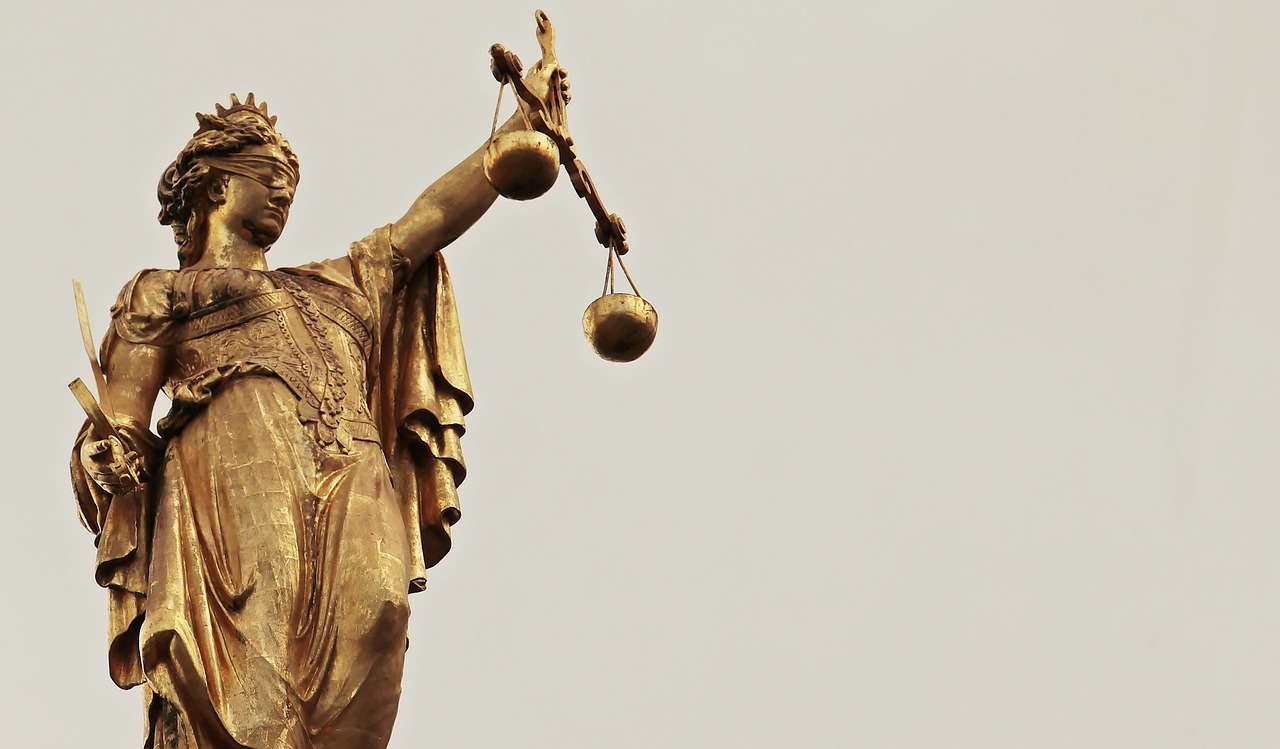
Critiques of Rawls's Theory
While John Rawls's Theory of Justice has garnered significant acclaim for its innovative approach to social justice, it has also faced a variety of critiques from different philosophical perspectives. Critics argue that Rawls's framework, while theoretically robust, may not adequately account for the complexities of human society. In particular, two major schools of thought—libertarianism and communitarianism—offer substantial challenges to Rawls's principles.
Libertarians, for instance, often take issue with Rawls's difference principle, which posits that social and economic inequalities are permissible only if they benefit the least advantaged members of society. To libertarians, this principle seems to infringe upon individual liberty and property rights. They argue that such redistributive measures violate the moral right to personal ownership and freedom. They believe that individuals should have the autonomy to make choices about their resources without state intervention, which they see as coercive. In their view, any system that prioritizes collective welfare over individual rights undermines the very essence of a free society.
On the other hand, communitarians critique Rawls's emphasis on individualism, arguing that it overlooks the importance of community and social context in shaping our understanding of justice. They contend that justice cannot be understood in isolation from the cultural and social frameworks that define a community. According to this perspective, Rawls's theory assumes a level of detachment that is unrealistic because individuals are inherently social beings, influenced by their relationships and community values. Communitarians argue that a just society must recognize and incorporate these communal ties, rather than treating individuals as isolated entities making decisions in a vacuum.
Moreover, both libertarians and communitarians often express concern over the practical implications of Rawls's theory. Critics question whether the principles derived from the original position can be realistically applied in a diverse society with varying values and beliefs. They argue that while Rawls's model may provide an ideal framework for justice, it lacks the necessary tools to navigate the messy realities of political life. For example, how do we reconcile the difference principle with the competing interests of various social groups? These critiques highlight the tension between the theoretical elegance of Rawls's ideas and the complexities of real-world application.
In summary, while John Rawls's Theory of Justice has made significant contributions to political philosophy, it is not without its challenges. The libertarian critique emphasizes the importance of individual rights and freedoms, while the communitarian perspective calls for a more integrated view of justice that considers community values. Both perspectives remind us that the pursuit of justice is a multifaceted endeavor, requiring a careful balance between individual liberties and social responsibilities.
- What is the difference principle in Rawls's Theory of Justice? The difference principle states that inequalities in society are only justified if they benefit the least advantaged members of society.
- How do libertarians critique Rawls's theory? Libertarians argue that Rawls's principles infringe on individual liberty and property rights, as they prioritize collective welfare over personal ownership.
- What do communitarians believe about Rawls's Theory? Communitarians contend that Rawls's emphasis on individualism overlooks the role of community and social context in shaping notions of justice.
- Are Rawls's principles applicable in real-world scenarios? Critics question the practicality of applying Rawls's principles in a diverse society, highlighting the complexities of balancing various social interests.

Libertarian Critiques
Libertarians often raise significant concerns regarding John Rawls's Theory of Justice, particularly focusing on the implications of the difference principle and the broader impact of Rawls's framework on individual liberty and property rights. At the heart of their critique is the belief that any form of redistribution of wealth, as suggested by Rawls, infringes upon personal freedoms and undermines the foundational principles of a free society. They argue that individuals should have the autonomy to control their own resources without interference from the state, which they see as a potential overreach of governmental power.
One of the core tenets of libertarianism is the emphasis on individual rights. Libertarians maintain that the difference principle, which permits inequalities only if they benefit the least advantaged members of society, can lead to a moral justification for coercive redistribution. This approach, they argue, inherently conflicts with the idea of voluntary exchange and personal responsibility. The libertarian perspective posits that individuals should be rewarded based on their efforts and talents, rather than being subject to the whims of a collective decision-making process that could favor certain groups over others.
Furthermore, libertarians contend that Rawls's focus on social cooperation and the collective good can lead to a slippery slope where the state increasingly encroaches upon individual liberties. They caution that once society accepts the premise of using the government to achieve social justice, it opens the door to potential abuses of power. This could manifest in policies that prioritize redistributive justice over merit-based outcomes, ultimately leading to a society where individual achievements are devalued.
Another point of contention is the concept of the 'veil of ignorance,' which libertarians argue is an unrealistic foundation for determining justice. They believe that it oversimplifies the complexities of human society and the relationships between individuals. In reality, people have different values, aspirations, and capabilities, which cannot be adequately addressed by a hypothetical scenario that strips away personal identity and circumstances. Libertarians assert that this approach fails to account for the diversity of human experience and the importance of personal agency in defining justice.
In summary, libertarian critiques of Rawls's Theory of Justice highlight a fundamental tension between the ideals of social justice and individual liberty. They argue that while seeking to promote fairness and equality, Rawls's principles may inadvertently lead to a society that limits personal freedoms and undermines the very values that a just society should uphold. The ongoing debate between these philosophical perspectives continues to shape discussions around justice and equity in contemporary political discourse.
- What is the difference principle in Rawls's Theory of Justice?
The difference principle states that social and economic inequalities are acceptable only if they benefit the least advantaged members of society. - How do libertarians view the difference principle?
Libertarians argue that the difference principle infringes upon individual liberties and property rights by justifying wealth redistribution. - What is the veil of ignorance?
The veil of ignorance is a thought experiment proposed by Rawls where individuals design a just society without knowing their own social status or personal attributes, ensuring impartiality. - Why do some critiques argue that Rawls's theory oversimplifies justice?
Critics believe that Rawls's hypothetical scenarios do not accurately reflect the complexities of real-world social dynamics and the diversity of individual values.

Communitarian Perspectives
The critiques from the communitarian perspective present a compelling challenge to John Rawls's Theory of Justice. Communitarians argue that Rawls's approach tends to overlook the significance of community values, social ties, and cultural contexts in shaping our understanding of justice. They believe that justice cannot be fully realized without considering the communal relationships that individuals are part of. In essence, they posit that individuals do not exist in a vacuum; rather, they are embedded in a web of social interactions that significantly influence their identities and moral frameworks.
One of the central tenets of communitarianism is the belief that our identities are formed through our relationships with others. For instance, think about how your upbringing, culture, and community shape your views on right and wrong. This perspective stands in contrast to Rawls's notion of the original position, where individuals are imagined to make decisions without any knowledge of their personal circumstances. Communitarians argue that this abstraction is unrealistic, as it strips away the very essence of what it means to be human: our connections to others.
Furthermore, communitarians critique the idea of the veil of ignorance. They contend that while it is a useful thought experiment, it fails to account for the diverse values and beliefs that exist within different communities. For example, a person from a collectivist culture may prioritize community welfare over individual rights, while someone from an individualistic culture might do the opposite. This divergence highlights the importance of recognizing that justice is not a one-size-fits-all concept but rather something that is deeply influenced by the social context in which individuals find themselves.
In light of these critiques, communitarians propose a more integrated approach to justice that emphasizes the role of community in shaping moral and ethical considerations. They advocate for a justice framework that acknowledges the importance of social bonds and the shared values that arise from them. This perspective encourages a dialogue between individual rights and community responsibilities, suggesting that a balance must be struck to achieve true justice.
To illustrate the communitarian perspective further, consider the following table that contrasts key elements of Rawls's theory with communitarian views:
| Aspect | Rawls's Theory | Communitarian Perspective |
|---|---|---|
| Focus | Individual rights and liberties | Community values and relationships |
| View of Justice | Universal principles applicable to all | Context-dependent and culturally specific |
| Decision-Making | Original position and veil of ignorance | Emphasis on communal dialogue and consensus |
| Identity | Independent and rational agents | Social beings shaped by community |
In conclusion, the communitarian critique of Rawls's Theory of Justice serves as a vital reminder of the complexities of human existence. It challenges us to reconsider how we define justice in a way that is inclusive of the rich tapestry of social relationships that define our lives. By incorporating community values into the discourse on justice, we can work towards a more holistic understanding that respects both individual rights and collective responsibilities.
- What is the main argument of communitarian critiques against Rawls? Communitarian critiques focus on the idea that Rawls's theory overlooks the importance of community values and social contexts in shaping notions of justice.
- How does the communitarian perspective differ from Rawls's Theory of Justice? While Rawls emphasizes individual rights and universal principles, communitarians argue for a justice framework that is context-dependent and shaped by community relationships.
- Why is the concept of the veil of ignorance criticized? The veil of ignorance is criticized for being an unrealistic abstraction that ignores the diverse values and beliefs present in different communities.
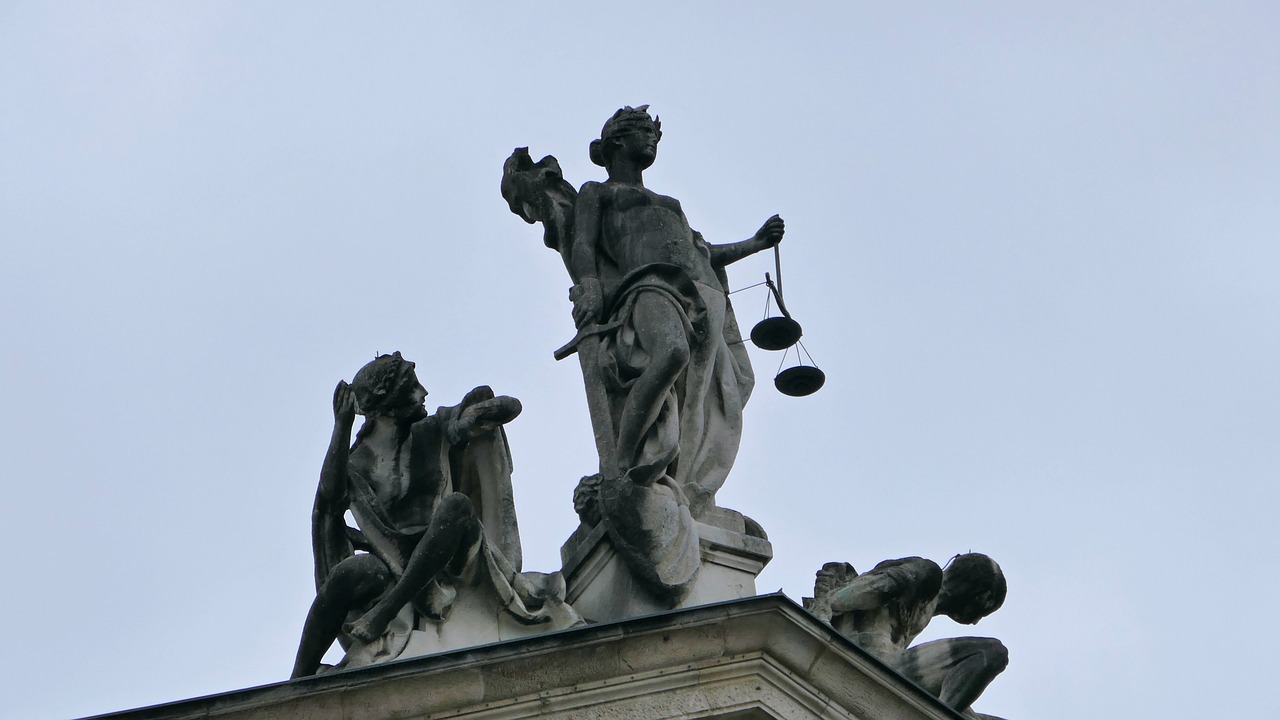
Contemporary Relevance
In today's world, the significance of John Rawls's Theory of Justice resonates more than ever. With social movements advocating for equality and fairness gaining momentum, Rawls's principles provide a critical lens through which we can examine contemporary issues. The ongoing debates around wealth distribution, healthcare access, and educational opportunities are deeply intertwined with Rawls's ideas about justice and fairness. How can we ensure that everyone has a fair shot at success? This question echoes Rawls's call for a society where inequalities are arranged to benefit the least advantaged.
Rawls's framework encourages us to think about justice not merely as a legal or political matter but as a fundamental aspect of our social fabric. For example, the Black Lives Matter movement and the fight for LGBTQ+ rights reflect a growing awareness of systemic injustices that Rawls's theory can help illuminate. By applying the principles of justice, we can better understand how societal structures can perpetuate inequality and what steps might be necessary to rectify these imbalances.
Moreover, the concept of the veil of ignorance remains a powerful tool for evaluating policies and practices. When we consider what laws or social norms we would endorse without knowledge of our own position in society, it becomes clear that many current practices may not hold up under such scrutiny. This thought experiment can guide us toward more equitable solutions in areas such as taxation, healthcare, and education. The idea is simple yet profound: if we were unaware of our social status, we would likely support systems that protect the most vulnerable among us.
Furthermore, Rawls's emphasis on the difference principle—which states that social and economic inequalities should be arranged to benefit the least advantaged—remains relevant in discussions about wealth inequality. The growing gap between the rich and the poor in many societies raises ethical questions about our responsibilities to one another. Shouldn't we strive for a society where the most disadvantaged can also thrive? This principle challenges us to rethink our priorities and advocate for policies that uplift those who are struggling.
As we navigate the complexities of modern political discourse, it’s essential to recognize that Rawls's Theory of Justice is not just an academic concept but a practical guide for creating a fairer society. His ideas inspire movements and discussions that challenge the status quo, pushing us toward a more just world. In this light, Rawls's work serves as a beacon, reminding us that the pursuit of justice is an ongoing journey, one that requires our active participation and commitment.
- What is the main idea behind Rawls's Theory of Justice?
Rawls's Theory of Justice emphasizes fairness and equality, proposing that social and economic inequalities should benefit the least advantaged members of society. - How does the veil of ignorance work?
The veil of ignorance is a thought experiment that asks individuals to design a society without knowing their own social status, encouraging impartiality in the creation of justice principles. - Why is Rawls's theory relevant today?
Rawls's principles provide a framework for addressing contemporary issues like income inequality, social justice movements, and the need for equitable policies in various sectors.
Frequently Asked Questions
- What is John Rawls's Theory of Justice?
John Rawls's Theory of Justice is a philosophical framework that seeks to define what a fair and just society looks like. It emphasizes principles like fairness and equality, proposing that justice should be understood through the lens of the original position and the veil of ignorance, where individuals make decisions without knowledge of their personal circumstances.
- What are the key principles of Rawls's Theory?
Rawls's Theory is built on two main principles: the principle of equal basic liberties, which ensures that everyone has the same fundamental rights, and the difference principle, which allows for social and economic inequalities only if they benefit the least advantaged members of society. This dual approach aims to balance freedom with fairness.
- What is the original position?
The original position is a hypothetical scenario proposed by Rawls where individuals, tasked with determining the principles of justice, do so without any knowledge of their personal traits or societal status. This ensures that the principles chosen are fair and impartial, as no one can tailor them to benefit themselves.
- How does the veil of ignorance work?
The veil of ignorance is a thought experiment that encourages people to make decisions about justice without any biases related to their own social or economic status. By stripping away personal advantages, individuals are more likely to choose principles that promote fairness for all, rather than self-serving rules.
- What are some critiques of Rawls's Theory?
Critiques of Rawls's Theory come from various perspectives. Libertarians argue that his difference principle infringes on individual liberties and property rights, while communitarians believe that Rawls overlooks the importance of community values and social contexts in shaping our understanding of justice.
- Is Rawls's Theory relevant today?
Yes, Rawls's Theory of Justice remains highly relevant in contemporary discussions about social justice, equality, and fairness. His ideas continue to inform debates on various political issues, including wealth distribution, healthcare access, and civil rights, making them crucial in today's societal discourse.

